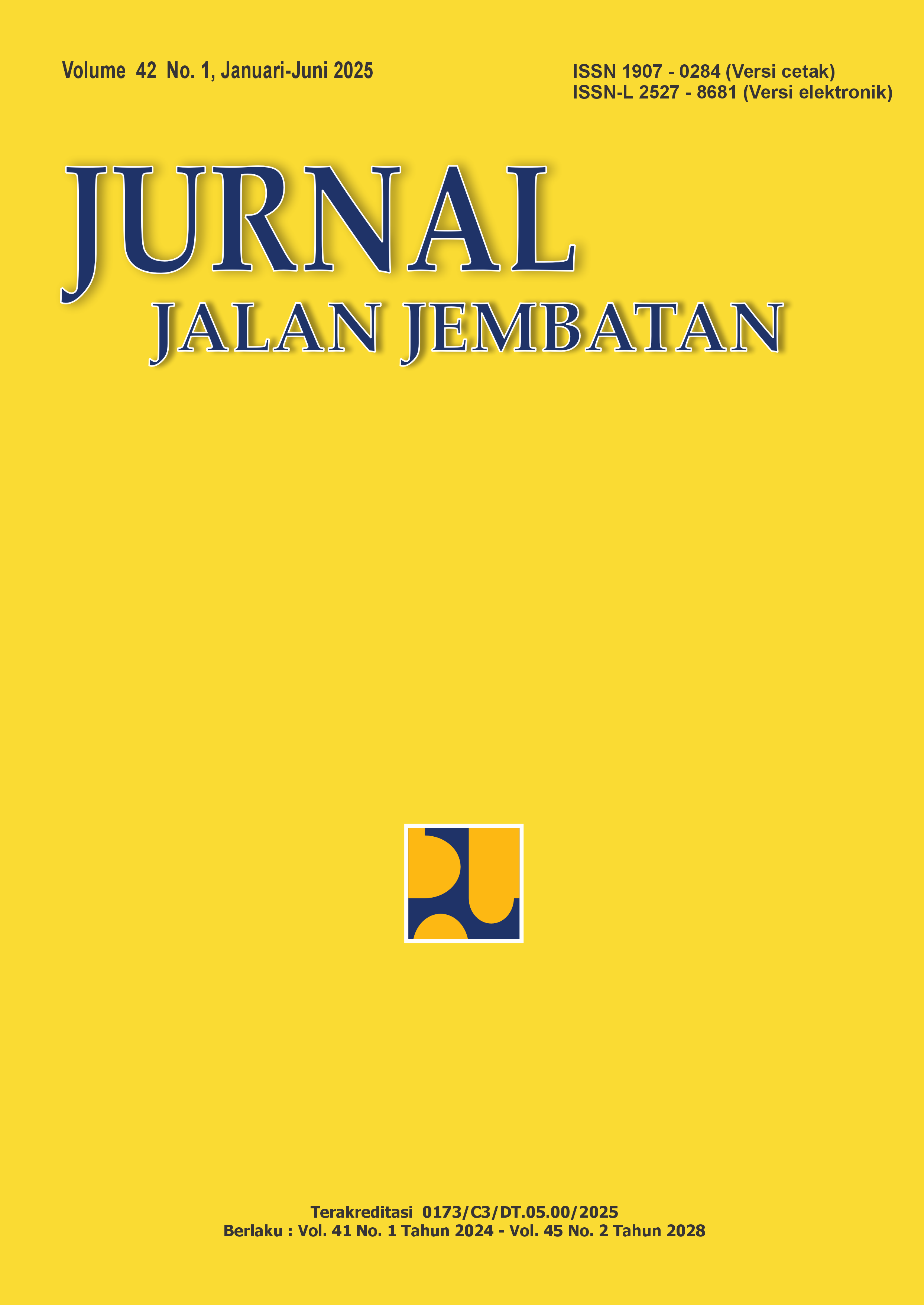ANALISIS PERKUATAN STRUKTUR JEMBATAN DALAM KONDISI DI BAWAH BEBAN MUATAN MELEBIHI KAPASITAS
Main Article Content
Abstract
Bridges are sometimes crossed by vehicles with loads exceeding their capacity. For example, the Ijen Crater Bridge 2 in East Java will be crossed by heavy vehicles loaded with 109 tons of generators, while the bridge load capacity is only 56 tons. Therefore, a comprehensive condition evaluation and appropriate reinforcement recommendations are needed. The research methods used include visual inspection, non-destructive testing (NDT), and structural modelling using SAP2000 software. Through visual inspection, general damage to the bridge was identified. NDT was used to obtain quantitative data on the material's condition. The results of both methods are input into structural modelling to analyze bridge behaviour under operational loads. The analysis results indicate that the maximum capacity ratio of the structure is 0.796. This value is below 1, which means that the structural capacity has met the requirements after reinforcement. The maximum deflection value of the structure stiffness is 3.582 mm or less than the allowable deflection of 15 mm, which means it has met the criteria. The moment analysis after reinforcement produces a Mu value of 121.387 kNm, or still greater than the Mn value of 69.6 kNm. Therefore, it is recommended to strengthen the concrete floor slab structure according to the results, including the use of Carbon Fibre Reinforced Polymer. Steel portals are installed in the middle of the bridge span, and shallow foundations are built in the river flow area. This study demonstrates that bridge reinforcement necessitates a comprehensive analysis and solutions to ensure the safety of the bridge structure is maintained.
Kata Kunci: jembatan kawah ijen, perkuatan jembatan, portal baja, muatan khusus, kapasitas struktur.
Keywords: ijen crater bridge, bridge reinforcement, steel portal, special load, structure capacity
Article Details

This work is licensed under a Creative Commons Attribution-NonCommercial-ShareAlike 4.0 International License.
Authors who publish in this journal agree to the following terms:
-
Authors retain copyright and grant the journal the right of first publication with the work simultaneously licensed under a Creative Commons Attribution License, which allows others to share the work with acknowledgment of the work's authorship and initial publication in this journal.
-
Authors may enter into additional contractual arrangements for the non-exclusive distribution of the journal's published version of the work (e.g., post it to an institutional repository or publish it in a book), with acknowledgment of its initial publication in this journal.
-
Authors are permitted and encouraged to post their work online (e.g., in institutional repositories or on their website) as it can lead to productive exchanges, as well as earlier and greater citation of the published work.
Each submitted manuscript must be accompanied by a "Manuscript Originality Statement" and a "Copyright Transfer Statement".

